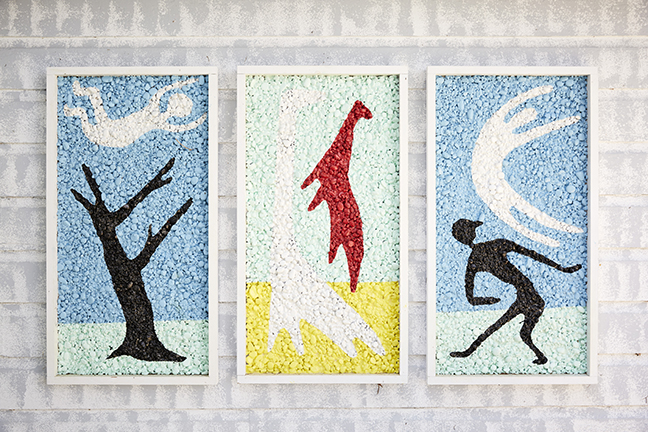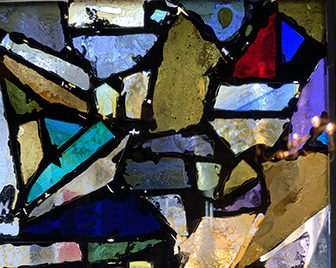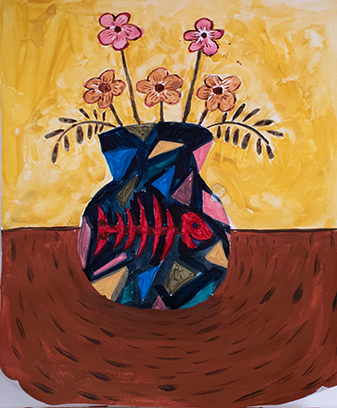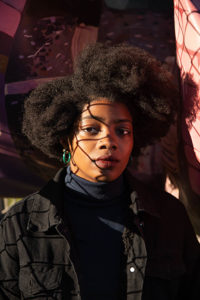Mary Nohl–Inspired Vessel Paintings with Phoenix S. Brown

Lesson by artist Phoenix S. Brown
Grades K–12
Design and paint a vase decorated with patterns and symbols inspired by Mary Nohl’s house and work. The vase can be traditionally shaped, oblong, or angular.
Vessels and representations of plants often occur in my paintings. The vases may house a personal memory through decoration or function as a familiar object of comfort (like a home or safety blanket). Through looking at reference images of textures, shapes, and patterns created by Mary Nohl, participants will develop vessels that reflect their observations of painted and sculptural compositions and experience my approach to painting imaginary still lifes.
Goals
• How to build depth and contrast through color blocking and color theory
• How to compose a collage composition
• How to achieve a level of completeness through refining painted edges
• How to draw from imagination or from references
Materials
• Heavyweight paper or printmaking paper
• 1 round and 1 flat paint brush
• Drawing utensil (pencil recommended)
• Watercolor paints
• Water
• Paper plate or paint palette
• Paper towels


Steps
1. Gather your materials (water, palette, paper, etc.).
2. Take a few minutes to look at the provided reference images of details from Mary Nohl’s work and select one figure, shape, or object, and one pattern or texture.
3. Once the details have been selected, take a drawing utensil and sketch the shape of a vase. Copying the shape of a vase from an image or a still life is OK; making up an imaginary vase design is also acceptable.
4. After completing the vase sketch, draw in your selected Nohl pattern, object, or shape within the drawn bounds of the vessel. Make sure to fill up the entirety of the vase design with your selected details. We recommend placing the selected object/figure/shape in the center of the composition as a subject and using the texture as a background.
5. Using color theory and your best judgement, fill in the vessel’s details with color using the provided paints as though you are working in a coloring book. Feel free to water down the pigments or use the paint straight from the tube.
6. When the vessel is filled with color, select a separate color to fill in the negative space around the vessel. You may be as detailed as you like with the background, adding other objects or a table underneath the vase.





